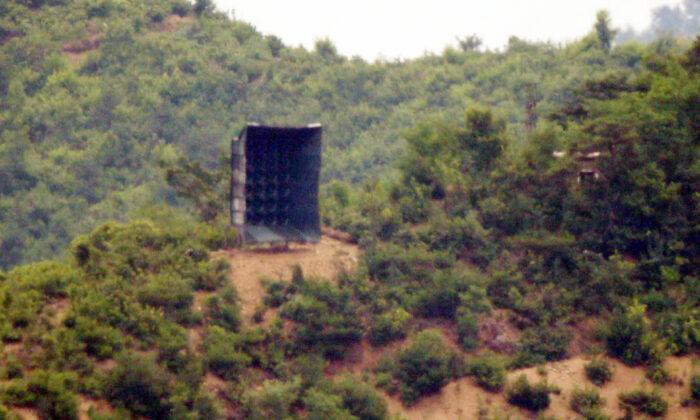SEOUL—North Korea is reinstalling loudspeakers blaring propaganda across the border in its latest step away from inter-Korean peace agreements, prompting the South’s military to explore similar moves, a South Korean military source said on June 23.
Tension between the two Koreas has risen in recent weeks after the North blew up a joint liaison office on its side of the border, declared an end to dialogue and threatened military action.

The North Korean regime’s military was seen putting up loudspeakers near the demilitarised zone (DMZ). Such systems were taken down after the two Koreas signed an accord in 2018 to cease “all hostile acts,” the military official said.
“We’re also considering reinstalling our own loudspeakers,” he said. “But the North hasn’t begun any broadcast yet, and we’re just getting ready to be able to counteract at any time.”
A spokeswoman at Seoul’s defense ministry declined to confirm North Korea’s moves but reiterated at a regular briefing that Pyongyang would “have to pay for the consequences” if it continues to defy joint efforts to foster peace.
The two countries have for decades pumped out propaganda from huge banks of speakers as a form of psychological warfare. The South aired a blend of news, Korean pop songs, and criticism of the northern regime, while the North blasted the South and praised its own socialist system.
Commercial satellite imagery of the liaison office site on Monday showed that the building remained standing, but had been heavily damaged.
Analysts at U.S.-based 38 North, which tracks North Korea, said last week that the explosion “was clearly not a controlled detonation, as the building was not leveled and there was significant collateral damage to the adjacent buildings.”
The North Korean regime began taking its recent actions as it denounced North Korean defectors in the South sending propaganda leaflets across the border.
Several defector-led groups have regularly sent flyers, food, $1 bills, mini radios, and USB sticks containing South Korean dramas and news, usually by balloon or in bottles in rivers.
One group, led by Park Sang-hak, who fled the isolated state in 2000, said on Tuesday it flew 20 balloons containing 500,000 leaflets, 500 booklets on South Korea, and 2,000 $1 bills.
South Korea’s government has pursued legal action to stop such activities, citing safety concerns for residents in border towns, but controversy remains over whether it violates the country’s protections for freedom of expression.
Seoul’s Unification Ministry handling inter-Korean affairs issued a statement vowing a stern response to the leaflet launches by Park’s group.
Pyongyang’s state media said on Monday angry North Koreans have also prepared some 12 million leaflets to be sent back.





